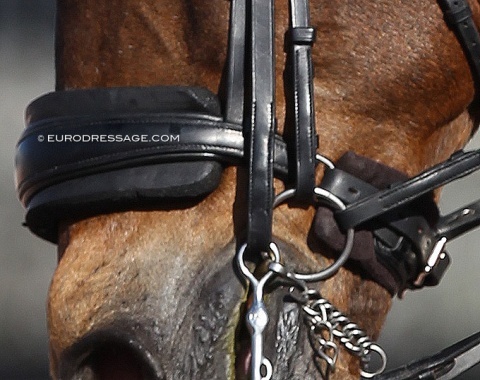
-- This article first appeared in British Dressage magazine January 2025 - reproduced with kind permission
The FEI has confirmed that new technology will be used to check for over-tightening of nosebands from 2025. We take a look at the research behind it and how it will be implemented.
Nosebands are part of the structure of a snaffle or double bridle and have an influence on the action of the bit or bits. However, overtightening can cause discomfort or pain and limit the horse’s ability to perform what he is being asked to do.
The traditional method of measuring whether a noseband is too tight was to insert two fingers between the noseband and the horse’s face, but as Dr Russell MacKechnie-Guire points out, this had a number of drawbacks.
“The method is believed to have emerged from veterinary and equestrian best practice. However, it’s inaccurate because assessors’ finger sizes differ and there was no firm consensus on where to take the measurement – on the side of the head, the front of the nose, or how the fingers should be orientated (side by side or stacked on top of each other).”
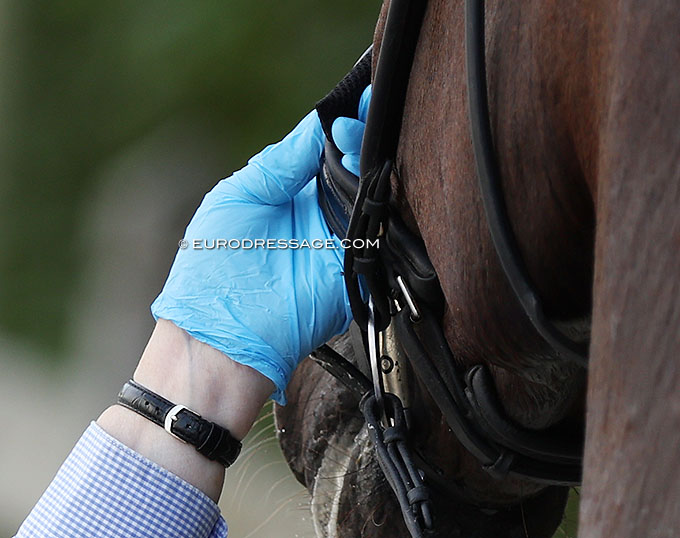
Dr Rachel Murray explains: “Noseband checks were made after FEI tests at the side of the noseband using their fingers – while other disciplines measured over the nasal bone. The ISES taper gauge is used on the nasal bone, and inserted from the bottom of the noseband. When the gauge is admitted beneath the noseband, it is resisted, which indicates how tight the noseband is i.e. 2.0 or 1.0 finger tightness. It was not a conclusive ‘pass or fail’.”
Along with Professor Hilary Clayton and Dr Murray, Dr MacKechnie-Guire undertook a research project to gather evidence on noseband fit and tightness, using the ISES taper gauge as a tool to determine the tightness of the noseband.
Working with Master Saddler Mark Fisher, pressure mats were placed beneath the noseband and measurements taken on the nasal bone and the mandible at the equivalent tightness: two fingers (2.0), 1.5, 1.0, 0.5 and 0.0. Nosebands tested included cavesson, flash, drop and Swedish (crank) designs. Across three studies noseband pressures were measured with horses standing, eating a treat and ridden in trot.

The data informed the dimensions of the tool, now officially adopted by the FEI, to test the tightness in a way that is ‘horse friendly and human friendly’, explains Dr MacKechnie-Guire. “We needed to do a study to inform the dimension of a measuring tool that was not subjective and could not be disputed – a ‘pass or fail’.” Dr Murray adds: “The steward should approach from the lefthand side of the horse and the tool will be inserted from the top to see if it will pass through the noseband from top to bottom. It’s designed to be easier to hold and handle with a slight curve to fit under the noseband and a long profile to work with any width of noseband.”
The FEI plans to roll out the use of the tool across all disciplines, so it needs to be simple to use in all situations. “There will be one tool, and one measurement. As riders and trainers we need to get our horses used to the tool ready for competition, but using it will also help us to check that we are training with the right level of tightness,” comments Dr MacKechnie-Guire. “By standardising measurements and checking nosebands consistently and accurately we are safeguarding their use. Its adoption is a huge step forward by the FEI for our sport.”
Bridle Fit and Pressure
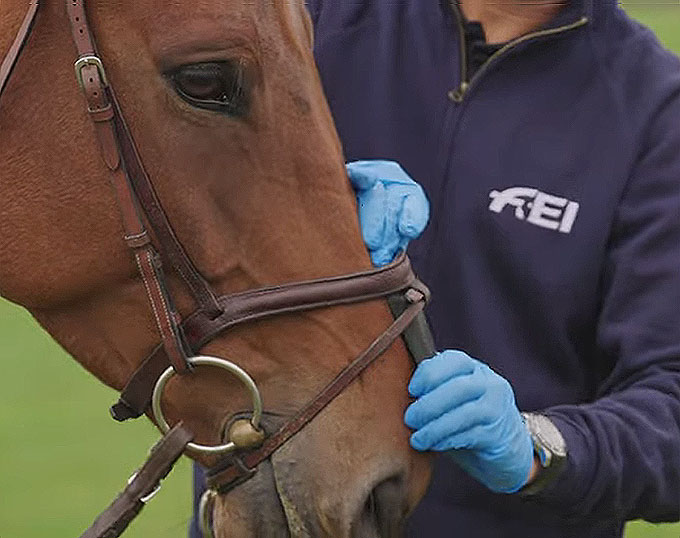
Her research on bridle fit – presented a lecture and webinar for World Horse Welfare in 2022 – considered the pressure points on the head affected by the bridle: the back of the ear, the wing of the atlas, the space between the ear of the atlas, the nasal bone and the bottom of the jaw.
“The bridle is the interface between horse and rider and has a significant influence on performance and comfort – we have to accept that one size doesn’t fit all,” she explains. “Some horses have a narrow space on the side of the head between the ear and the wing of the atlas, which can lead to pressure points between the top of the head and the browband. The noseband exerts pressure on either side of the nasal bones and under the mandibles.”
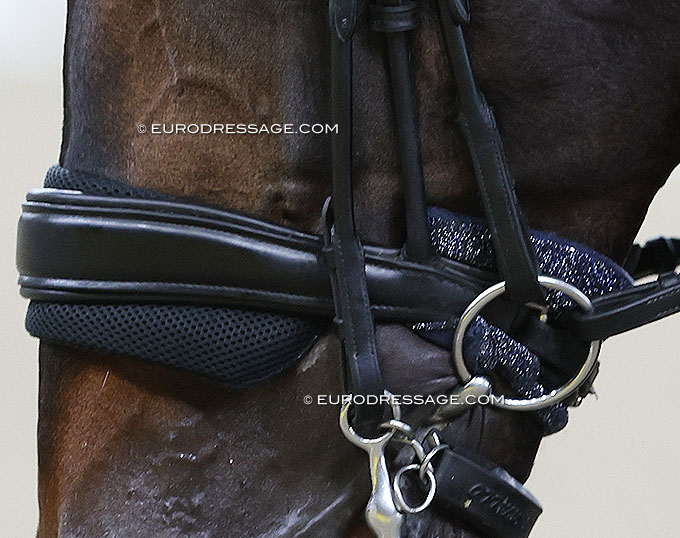
“While we have looked at the tightness of the noseband, its position and fit are of equal importance. Bridles must fit the individual horse – if the front of a flash or cavesson is too long, it will drop down and put pressure on the nostrils regardless of tightness, but riders tend to overtighten it to stop it dropping. Equally if it is too high it can press on the facial crest.”
Dr Murray adds that research has shown that by adding padding to the noseband or changing its design, the horse’s movement can be improved. “A correctly fitted noseband can play a positive role in stabilising the bridle; having it too loose can also cause problems.”
Implementation of the FEI measuring device
The FEI plans to implement the measuring device from 1st May 2025, a date that has been pushed back to allow additional time to educate officials in its use.
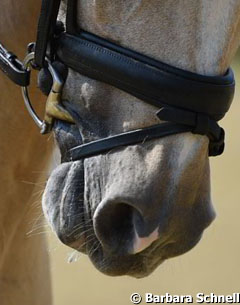
Officials will be supplied with the device, but it will also be available to purchase from the BD Shop later in 2025 so that riders and trainers can accustom their horses to its use.
BD will also be providing video resources and guides to support members with training and familiarising their horses to accept the gauge.
-- Jane Carley / British Dressage Magazine Issue 1 2025
Photos © Astrid Appels - FEI - Barbara Schnell
Related Links
FEI Postpones Implementation of Noseband Measuring Device
FEI Measuring Device for Control of Noseband Tightness Gradually Rolled out at 2025 FEI Events
Noseband and Poll Pressures Underneath Bitless Bridles Measured
Rein Tension with Bitless Bridles Compared to Single-Jointed Snaffle Bits
ISES Suggest to Empower FEI Stewards to Control Tightness of Noseband
Winther Christensen: "Equestrian Sport: the good, the bad and the ugly – and where next?"
Would Your Horse’s Noseband Pass the Pressure Test?
On the Ignorance of Noseband Tightness and Vague FEI Noseband Rules
An Investigation into Noseband Tightness Levels on Competition Horses
Eurodressage's NOSEBAND SPECIAL
Noseband Special: Part I: The History of the Noseband
Noseband Special: Part II: The Purpose of the Noseband
Noseband Special: Part III: Riders and Trainers on Their Choice in Noseband
Noseband Special: Part IV: The Thicker, the Wider, the Better?